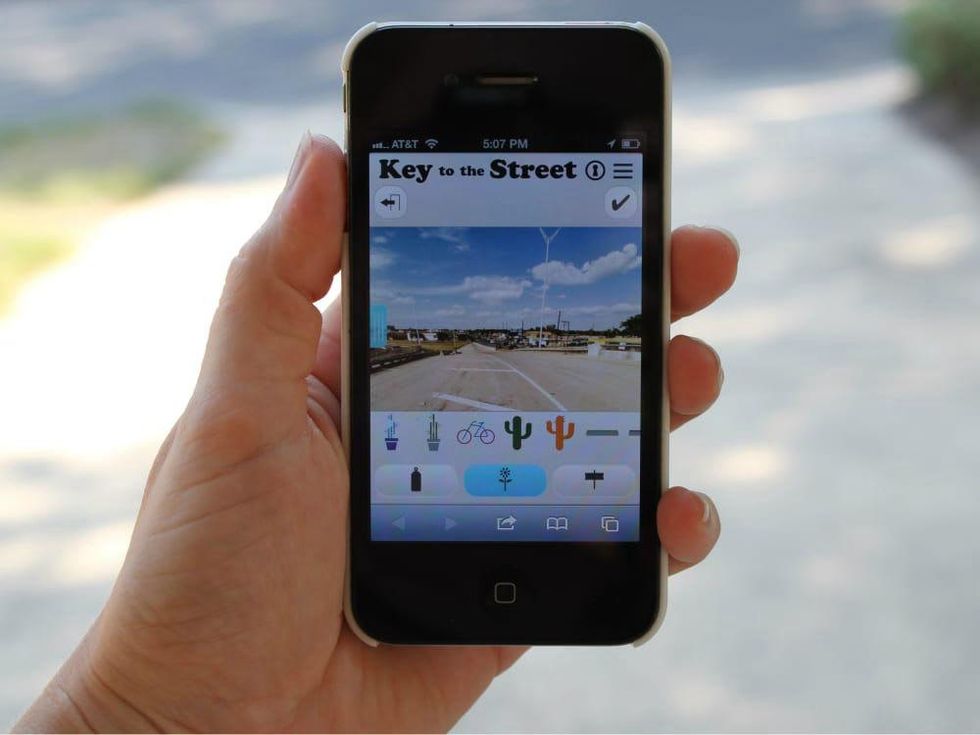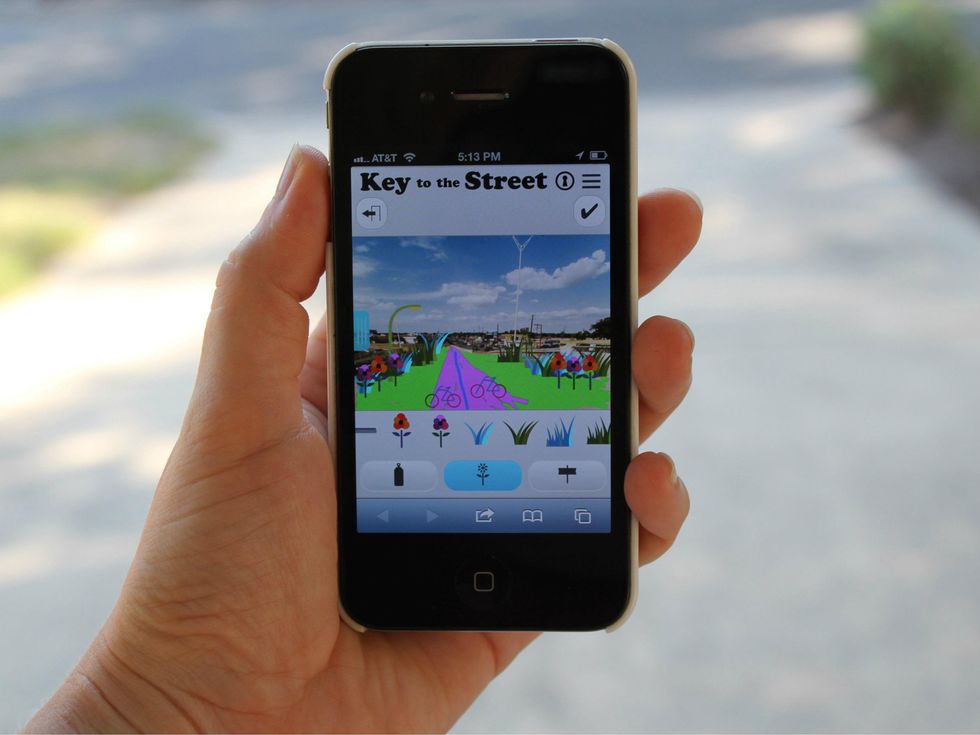Austin's New Key to the Street
Taking it to the streets: Austin designer's mobile tool helps all create walkable cities
Imagine the next time you grumbled about the lack of outdoor lighting on your child’s route to school, or the lack of transportation options in your neighborhood, you could let your city know about it by taking a picture of the area on your phone and adding your suggestions — via drawing and adding features right on the photo. That kind of city planning might become a reality with Key to the Street, a web-based platform Austinite Jess Lowry is designing.
Lowry, a local user experience designer who has logged 10 years in the community management field, has been developing Key to the Street for nearly a year. She’s raising money to complete the beta version of this urban design tool through a Kickstarter campaign she launched this month. If she reaches her funding goal of $10,000, she’ll begin testing it with the city of Austin next spring.
App designer Jess Lowry has observed that unsafe walking conditions isolate people and limit their opportunities.
The urban design tool gives pedestrians a voice by sourcing feedback from citizens so city planners can make well-informed decisions for development projects, Lowry says in her Kickstarter video.
“When you walk here, it’s almost a bizarre event,” says Lowry, sitting at an outdoor table at Thrice Café. She points her finger westward, loosely drawing the route from her place on Lamar Boulevard to the neighborhood café on Mary Street, a mere 15-minute walk. One of the sidewalks between Lamar and Fifth Street comes to an abrupt end, she explains, leaving her no other option but to walk on the road or get in her car and drive, as most people in Austin do.
Lowry observed from her own experience that unsafe walking conditions isolate people and limit their opportunities. “People should care about that,” she says. “They’re basically living in a gated neighborhood.”
Lowry hopes Key to the Street will empower pedestrians to rally together to improve conditions in their cities — making neighborhoods safer and more appealing places to live.
The online tool is simple. Pedestrians have the option of snapping a photo with their phones and then designing their own additions by drawing and dragging and dropping predesigned elements, such as flowers or grass, on to the screen. The next step is recording their locations on their mobile devices and uploading their finished creations. The tool also gives participants the option of recording their ideas via audio recording or text message, using Twilio’s services.
Lowry hopes Key to the Street will empower pedestrians and make neighborhoods safer and more appealing places to live.
Lowry wants Key to the Street to become a global tool that cities would pay to login in to, but she’s currently focused on Austin. “If you look at the population growth in Austin, you could build around it, but you’d never keep up with the space on the road,” Lowry say, addressing the city’s increase in traffic and influx of people abandoning the suburbs to move downtown. “I think there’s an opportunity to raise the status of walking here.”
She sent an email to Imagine Austin in January about her web service and how it could help urban planners gather critical data and information. The group referred her to Doug Matthews, the city's chief communications director. After a few meetings, the city greed to help Lowry test the Key to the Street pilot on projects happening throughout town.
Lowry has been meeting with Christine Freundl, senior planner for the city of Austin’s planning and development department, about how her tool can help nail down metrics for some of the city's projects, including Transit Oriented Development (TOD), which aims to connect neighborhoods close to transit stations.
“We’re interested who the TODs are serving. What sorts of ridership we’re getting on the train. Who lives within a mile of the train? The people who ride the train usually have a phone anyway, so they could quickly take surveys and give us some information,” Freundl says.
In September, Lowry joined the Pedestrian Advisory Council (PAC) because she saw a solution to what PAC was trying to address — the lack of sidewalks. “That doesn’t equal walkability,” she says. “It’s actually a culture of walking that creates a movement.”
“The opportunity to be a catalyst and to be involved in a walking culture is important.” — Jess Lowry
Another issue PAC faced was reaching members of the community. Typically, urban development issues are brought up at community meetings, but most people won’t take the time out of their busy schedules to attend. Her tool could both engage and educate people about what city developers are proposing, so the community could feel connected to the change.
“We live in a really tech-savvy city with a young population, and I think we can meet a demographic that we’re having trouble meeting," Freundl said. "At public meetings, there are usually retirees, and the one-in-a-million citizen who’s really fired up that usually show up to every public meeting there is. Most people don’t have the luxury of meeting up for two hours. Here’s another forum that’s quicker and more affordable, and we’ll get a lot of diversity."
Lowry conceived the idea while she was living in Melbourne, Australia. The original concept was to create a “lifestyle matching” tool that connected people with businesses that sourced their wares locally. But when Lowry moved to Austin last fall, the idea quickly changed because the tool was designed for people to walk to their locations, and she didn’t like the idea of designing a GPS.
“The walking part became what I began to focus on, and the design came around it,” Lowry says. “I think the opportunity to be a catalyst and to be involved in a walking culture is important.”
In March, Lowry submitted a pitch for the SXSW Interactive Made in Banff prize. The criterion was applicants needed to submit a project that challenges people’s behaviors and requires them to think differently about social issues. Lowry ultimately won the competition and spent two weeks in Alberta, Canada, at The Banff Centre, where the developers turned her pitch into a proof of concept.
That proof was unveiled at SXSW Eco's Place by Design Competition in October. Since then, Lowry enlisted some web development work from Murali Allada, a software designer at Rackspace — but in order to turn the demo into a full-functioning tool before March, in time for SXSW Interactive 2014, she needs capital to pay for two full-time developers. Her goal is to reach $10,000 on Kickstarter by January 15.
Learn more about Key to the Street by visiting Lowry’s Kickstarter page.


